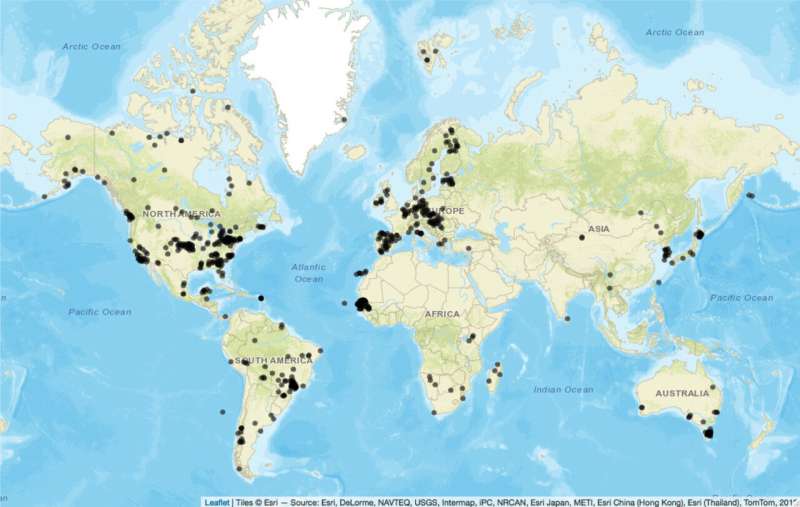October 20, 2021 report
Toxoplasmosis in wild animals found to be more common in dense urban areas

A team of researchers affiliated with several institutions in Canada has found evidence that the parasitic disease toxoplasmosis is more common in wild animals that live in or around large urban areas. In their paper published in Proceedings of the Royal Society B, the group describes their analysis of data collected by other researchers looking into various aspects of the disease.
Toxoplasmosis is a parasitic disease that is caused by infections of the obligate intracellular parasitic protozoan, toxoplasma gondii. Prior research has shown that between 30 and 50 percent of the human population is currently infected by the parasite. Fortunately, the vast majority experience no symptoms. Humans become infected by eating undercooked meat or by handling cat feces while cleaning the litter box—wild and domestic cats are the primary spreaders. In this new effort, the researchers wondered about the prevalence of toxoplasmosis infections in wildlife. To learn more, they collected and analyzed data from 202 published studies regarding 45,079 infection cases, covering 238 different species. As part of their analysis, they compared infection rates based on factors such as rainfall, temperature and population density.
The researchers found that those animals in more densely human-populated areas were more likely to become infected. They suggest that it is likely that such infections are due to interactions with free-roaming house cats. The researchers also noted that there were more infections in wild animals in warmer areas. They also point out that the number of cats given free rein in many parts of the world has continued to rise—and at the same time, urban expansion continues unabated. The result is more interaction between cats and other animals, and thus, more toxoplasmosis infections. The researchers suggest that that the obvious solution to the problem is for public health officials to place restrictions to keep cats from roaming freely. The study shows that there is value in breaking down evidence in large numbers of field studies to learn more about disease risks, both to wildlife and to humans.
More information: Amy G. Wilson et al, Human density is associated with the increased prevalence of a generalist zoonotic parasite in mammalian wildlife, Proceedings of the Royal Society B: Biological Sciences (2021). DOI: 10.1098/rspb.2021.1724. rspb.royalsocietypublishing.or … .1098/rspb.2021.1724
Journal information: Proceedings of the Royal Society B
© 2021 Science X Network



















